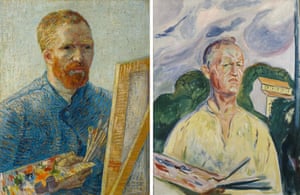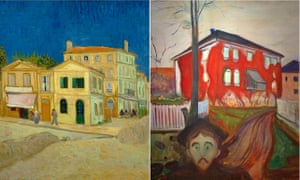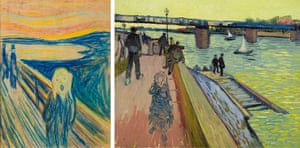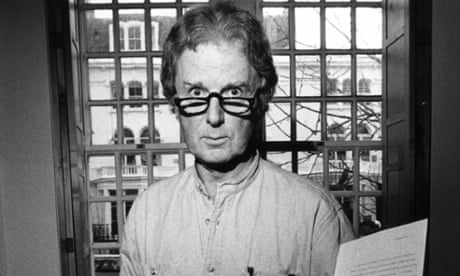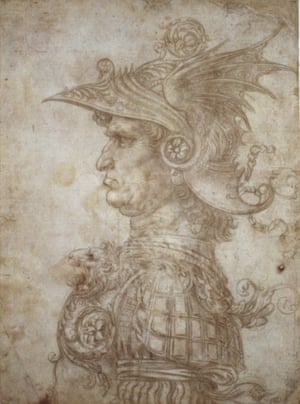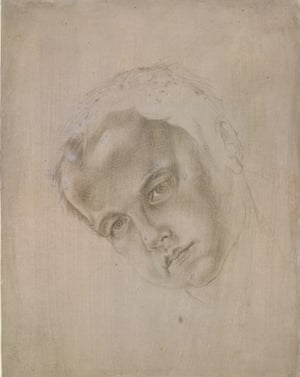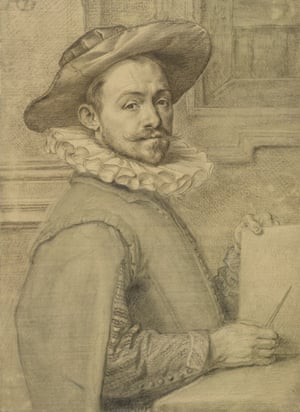C.K. Williams, Pulitzer-winning poet, dies at 78
Martin Weil
Then woman leaves the train, prompting Mr. Williams to ponder,
though I must be to her again
as senseless as that table of my youth, as wooden, as unfeeling, perhaps
there was a moment I was not.
Such poems appeared to exemplify what he described to an interviewer as his “effort to find a way to put back into my poems a lot of the materials of ordinary speech and of ordinary thought.”
But this was not an easy task, he noted. Observations of daily life, or indignation over global problems, or any of the myriad matters that might serve as inspiration do not become poetry until a suitable means of expression comes to hand, until the language and the diction were right, Mr. Williams would say.
More succinctly, he added, “A poem doesn’t exist until it has its music.”
Aggressive pursuit of pleasure
Charles Kenneth Williams was born in Newark, on Nov. 4, 1936, and grew up in South Orange, N.J. His father, who sold office machines, provided a comfortable suburban upbringing, but his personality was mercurial. He said his mother was ascetic and withdrawn.
“I wasn’t a particularly intellectual kid,” he told the Los Angeles Times. “What I was, was a really bored kid. I read everything I could get my hands on.”
He also grew to be 6-foot-5 and was recruited to Bucknell University in Pennsylvania to play basketball. But his interest in the sport waned, and he transferred to the University of Pennsylvania, where he graduated in 1959.
His college interests were philosophy and English. He also began dabbling in poetry, initially at the behest of his then-girlfriend. Privately, he immersed himself in the works of Charles Baudelaire, William Butler Yeats and Rainer Maria Rilke.
While working on his own prose, he was a part-time psychotherapist for young adults and held down brief editing and writing jobs in Pennsylvania. He also married and had a daughter, all the while embracing the freedom of the sexual revolution.
He described his private life as a volatile mixture of excitement and guilt and, in his verse, he made connections between his own aggressive pursuit of pleasure — “sexual madness,” he called it — and the raging war in Vietnam.
“Lies” (1969), his first volume of poetry, was published with the endorsement of poet Anne Sexton, whom he had met at a reading in Philadelphia. It contained one of his most noted early poems, “A Day for Anne Frank,” which linked the civil rights movement of the 1960s with the Holocaust.
“Flesh and Blood” (1987) won the National Book Critics Circle award for poetry. Several volumes later, Mr. Williams’s collection “The Singing” won the 2003 National Book Award. In addition to his poetry, he published a memoir (“Misgivings: My Mother, My Father, Myself”), works of criticism and two children’s books.
He worked at George Mason University from 1982 to 1995 and retired recently from the faculty of Princeton University, where he taught courses in poetry writing and in translation. He divided his time between New Jersey and France, his second wife’s native country.
His first marriage, to Sarah Jones, ended in divorce. Survivors include his wife, Catherine Mauger Williams; a daughter from his first marriage; and a son from his second marriage. A complete list of survivors could not be confirmed.
In interviews, Mr. Williams often discussed the alchemy of turning emotions into words.
“Something happens when you write — especially poetry, of course, and prose, too,” he told “The NewsHour with Jim Lehrer” in 2000. “There’s a kind of a feeling of something happening to you that’s a kind of fusion of will and submission and inspiration that’s quite marvelous, where something sometimes will — at its very best — seems to be happening through you and to you, rather than you making it happen.
“And there’s very little in the world that’s like that,” he added, “and very little that’s so close that’s coming out of your own consciousness into something else.”
https://www.washingtonpost.com/entertainment/books/ck-williams-whose-conversational-poetry-drew-praise-dies-at-78/2015/09/22/ac40eef2-6148-11e5-b38e-06883aacba64_story.html
Martin Weil
Washington Post
22 September 2015
C.K. Williams, an American poet who won the Pulitzer Prize and the National Book Award, and was known for extended lines that captured conversation and provided ample room for emotion, died Sept. 20 at his home in Hopewell, N.J. He was 78.
Author Joyce Carol Oates, a close friend, confirmed the death to the Associated Press. The cause was cancer.
Over a career that produced at least 20 books of poetry, Mr. Williams was compared to Walt Whitman for the length and expansiveness of his flowing lines, and for their ability to track the twists and turns, of human feelings and consciousness.
On the other hand, he could not be simply categorized; shorter, briefer lines characterized many of the poems in “Repair,” the collection that won the 2000 Pulitzer. What both styles had in common, critics noted, was keen intelligence and restless curiosity about people and the world.
Mr. Williams was known for possessing a broad and passionate vision of the potentialities of poetry, giving attention to such matters as civil rights, the Vietnam War and the hazards of atomic power. Poet Robert Pinsky once noted that Mr. Williams was sometimes associated with “ferocious, boldly topical poems.”
C.K. Williams, who won the Pulitzer Prize for poetry in 2000. (Benoit Cortet)
In “Tar,” a poem about Pennsylvania’s Three Mile Island nuclear accident in 1979, he had himself wondering:
if and when to make a run for it and where, then a coming bolt awake
at seven
when the roofers we’ve been waiting for since winter sent their ladders
shrieking up our wall,
we still know less than nothing: the utility company continues making
little of the accident,
the slick federal spokesmen still have their evasions in some semblance
of order.
Mr. Williams also parsed the significance of small glimpses from daily life, about chance encounters, about families and how they worked.
In “On the Metro,” he gave another demonstration of his ability to infuse the gifts of the poet into the most seemingly mundane events. The poem also represents what was for him a major theme: the human wish to establish connection.
On a train, in the poem, a woman’s arm brushes his. It evokes the memory of a girl he had desired, who was sitting across a library table from him in school:
our feet I thought touching, touching even again, and then, with all I
craved that touch to mean,
my having to realize it wasn’t her flesh my flesh for that gleaming time
had pressed, but a table leg.
C.K. Williams, an American poet who won the Pulitzer Prize and the National Book Award, and was known for extended lines that captured conversation and provided ample room for emotion, died Sept. 20 at his home in Hopewell, N.J. He was 78.
Author Joyce Carol Oates, a close friend, confirmed the death to the Associated Press. The cause was cancer.
Over a career that produced at least 20 books of poetry, Mr. Williams was compared to Walt Whitman for the length and expansiveness of his flowing lines, and for their ability to track the twists and turns, of human feelings and consciousness.
On the other hand, he could not be simply categorized; shorter, briefer lines characterized many of the poems in “Repair,” the collection that won the 2000 Pulitzer. What both styles had in common, critics noted, was keen intelligence and restless curiosity about people and the world.
Mr. Williams was known for possessing a broad and passionate vision of the potentialities of poetry, giving attention to such matters as civil rights, the Vietnam War and the hazards of atomic power. Poet Robert Pinsky once noted that Mr. Williams was sometimes associated with “ferocious, boldly topical poems.”
C.K. Williams, who won the Pulitzer Prize for poetry in 2000. (Benoit Cortet)
In “Tar,” a poem about Pennsylvania’s Three Mile Island nuclear accident in 1979, he had himself wondering:
if and when to make a run for it and where, then a coming bolt awake
at seven
when the roofers we’ve been waiting for since winter sent their ladders
shrieking up our wall,
we still know less than nothing: the utility company continues making
little of the accident,
the slick federal spokesmen still have their evasions in some semblance
of order.
Mr. Williams also parsed the significance of small glimpses from daily life, about chance encounters, about families and how they worked.
In “On the Metro,” he gave another demonstration of his ability to infuse the gifts of the poet into the most seemingly mundane events. The poem also represents what was for him a major theme: the human wish to establish connection.
On a train, in the poem, a woman’s arm brushes his. It evokes the memory of a girl he had desired, who was sitting across a library table from him in school:
our feet I thought touching, touching even again, and then, with all I
craved that touch to mean,
my having to realize it wasn’t her flesh my flesh for that gleaming time
had pressed, but a table leg.
Then woman leaves the train, prompting Mr. Williams to ponder,
though I must be to her again
as senseless as that table of my youth, as wooden, as unfeeling, perhaps
there was a moment I was not.
Such poems appeared to exemplify what he described to an interviewer as his “effort to find a way to put back into my poems a lot of the materials of ordinary speech and of ordinary thought.”
But this was not an easy task, he noted. Observations of daily life, or indignation over global problems, or any of the myriad matters that might serve as inspiration do not become poetry until a suitable means of expression comes to hand, until the language and the diction were right, Mr. Williams would say.
More succinctly, he added, “A poem doesn’t exist until it has its music.”
Aggressive pursuit of pleasure
Charles Kenneth Williams was born in Newark, on Nov. 4, 1936, and grew up in South Orange, N.J. His father, who sold office machines, provided a comfortable suburban upbringing, but his personality was mercurial. He said his mother was ascetic and withdrawn.
“I wasn’t a particularly intellectual kid,” he told the Los Angeles Times. “What I was, was a really bored kid. I read everything I could get my hands on.”
He also grew to be 6-foot-5 and was recruited to Bucknell University in Pennsylvania to play basketball. But his interest in the sport waned, and he transferred to the University of Pennsylvania, where he graduated in 1959.
His college interests were philosophy and English. He also began dabbling in poetry, initially at the behest of his then-girlfriend. Privately, he immersed himself in the works of Charles Baudelaire, William Butler Yeats and Rainer Maria Rilke.
While working on his own prose, he was a part-time psychotherapist for young adults and held down brief editing and writing jobs in Pennsylvania. He also married and had a daughter, all the while embracing the freedom of the sexual revolution.
He described his private life as a volatile mixture of excitement and guilt and, in his verse, he made connections between his own aggressive pursuit of pleasure — “sexual madness,” he called it — and the raging war in Vietnam.
“Lies” (1969), his first volume of poetry, was published with the endorsement of poet Anne Sexton, whom he had met at a reading in Philadelphia. It contained one of his most noted early poems, “A Day for Anne Frank,” which linked the civil rights movement of the 1960s with the Holocaust.
“Flesh and Blood” (1987) won the National Book Critics Circle award for poetry. Several volumes later, Mr. Williams’s collection “The Singing” won the 2003 National Book Award. In addition to his poetry, he published a memoir (“Misgivings: My Mother, My Father, Myself”), works of criticism and two children’s books.
He worked at George Mason University from 1982 to 1995 and retired recently from the faculty of Princeton University, where he taught courses in poetry writing and in translation. He divided his time between New Jersey and France, his second wife’s native country.
His first marriage, to Sarah Jones, ended in divorce. Survivors include his wife, Catherine Mauger Williams; a daughter from his first marriage; and a son from his second marriage. A complete list of survivors could not be confirmed.
In interviews, Mr. Williams often discussed the alchemy of turning emotions into words.
“Something happens when you write — especially poetry, of course, and prose, too,” he told “The NewsHour with Jim Lehrer” in 2000. “There’s a kind of a feeling of something happening to you that’s a kind of fusion of will and submission and inspiration that’s quite marvelous, where something sometimes will — at its very best — seems to be happening through you and to you, rather than you making it happen.
“And there’s very little in the world that’s like that,” he added, “and very little that’s so close that’s coming out of your own consciousness into something else.”

